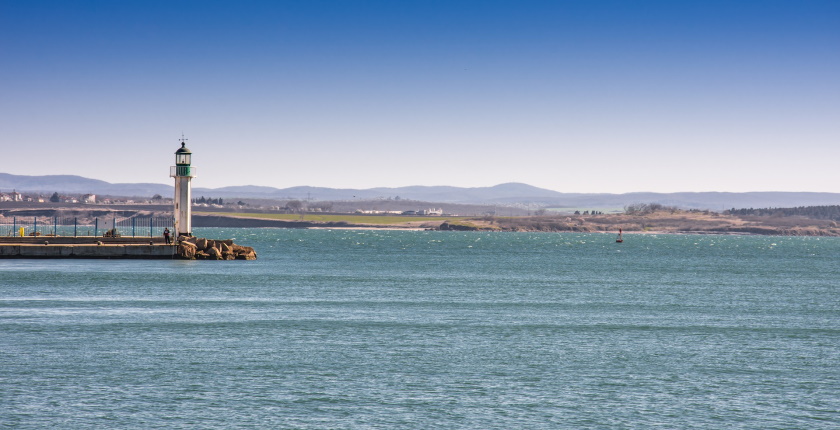
Port of Burgas (photo: Christo Anestev from Pixabay)
The Bulgarian territorial waters of the Black Sea offer 116 GW of technical wind potential, 26 GW of which can be utilized in accessible territories with the currently available technological solutions, according to a new report by the Center for the Study of Democracy (CSD) from Bulgaria.
“The Bulgarian Black Sea territorial waters carry significant decarbonization potential for the country’s energy system, for the low-carbon transformation of the industrial sector, and possibilities for economic development of coastal communities. By following the UK leadership in the development of the offshore wind energy sector, the Bulgarian government could change the national energy policy framework to unlock the country’s enormous potential,” according to the participants at an online event called Unlocking the Offshore Wind Energy Potential in the Black Sea. It was organized by CSD and the British Embassy in Bulgaria.
Bulgaria hasn’t yet declared its coal phaseout year, which could lower its ability to secure money for the energy transition, experts say.
The study, presented at the conference, confirms the findings of the World Bank, the European Commission’s Joint Research Center and other energy models in recent years. It is also building on them by using national data and taking into account current trends in the development of wind energy technologies in maritime areas.
The cost of electricity generated by fixed-bottom wind installations is EUR 62 to EUR 90 per MWh
The World Bank estimated the Black Sea offshore wind technical potential at 435 GW last year, of which 269 GW would be fixed-bottom turbines and the remaining 166 GW would be floating. Romania, a neighboring Black Sea country, has announced it would adopt a law on offshore wind by the end of the year. The European Union has adopted a strategy with a 300 GW target for offshore wind by 2050.
According to CSD’s study, the cost per megawatt-hour of electricity generated by fixed wind installations near the coastline ranges from EUR 62 to EUR 90, while the cost per unit of energy produced by floating wind farms is between EUR 120 and EUR 158 per MWh..
Two largest Bulgarian ports could become decarbonization hubs
In the development of offshore energy, Bulgaria could benefit from job creation, new technological clusters, and local equipment supply chains. The offshore wind industry could transform the two largest Bulgarian ports (Varna and Burgas) into decarbonization hubs, which will contribute to further development of the sector in the Black Sea.
“Nevertheless, current national strategic document roadmaps fail to recognize the potential of Bulgarian maritime territories for the decarbonization of the energy sector. As a consequence, the lack of strategic orientation towards offshore wind energy development reflects on maritime spatial planning and energy grid development roadmaps,” CSD said.
The European Offshore Wind Strategy recognizes all untapped opportunities in the Black Sea area
The study recommends the needed administrative and regulatory changes, infrastructure improvements and incentives to attract long-term high-tech investment.
The European Offshore Wind Strategy recognizes all the untapped opportunities in the Black Sea area as well as the financial mechanisms of the European Green Deal, which offers a timely opportunity for financing the pre-conditions of the formation of a regional offshore wind energy industry in Bulgaria, CSD said.


















Its true the potential is present, but most of the close-to-shore waters south of the Burgas bay and close to Cape Kaliakra are part of NATURA 2000. Navigational routes, gas exploration concessions, and military training areas take also a large portion of the coastal waters suitable for offshore wind. So there are very few areas, left open for offshore wind installation. On the other hand, there is no map of all these areas, that would allow allocation of areas for wind farms free from all of the above. the available maps do not even use a unified coordinate system so if Bulgaria wants to develop this business it should first create a map of its territorial waters with all obstacles in it – natura, concessions, navigation, and military areas so investors could assess at early project stage the costs for grid connection and the investment itself.